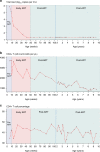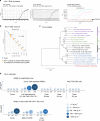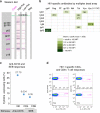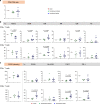A child with perinatal HIV infection and long-term sustained virological control following antiretroviral treatment cessation
- PMID: 30679439
- PMCID: PMC6345921
- DOI: 10.1038/s41467-019-08311-0
A child with perinatal HIV infection and long-term sustained virological control following antiretroviral treatment cessation
Abstract
Understanding HIV remission in rare individuals who initiated antiretroviral therapy (ART) soon after infection and then discontinued, may inform HIV cure interventions. Here we describe features of virus and host of a perinatally HIV-1 infected child with long-term sustained virological control. The child received early limited ART in the Children with HIV Early antiRetroviral therapy (CHER) trial. At age 9.5 years, diagnostic tests for HIV are negative and the child has characteristics similar to uninfected children that include a high CD4:CD8 ratio, low T cell activation and low CCR5 expression. Virus persistence (HIV-1 DNA and plasma RNA) is confirmed with sensitive methods, but replication-competent virus is not detected. The child has weak HIV-specific antibody and T cell responses. Furthermore, we determine his HLA and KIR genotypes. This case aids in understanding post-treatment control and may help design of future intervention strategies.
Conflict of interest statement
The authors declare no competing interests.
Figures





References
Publication types
MeSH terms
Substances
Grants and funding
LinkOut - more resources
Full Text Sources
Medical
Molecular Biology Databases
Research Materials

